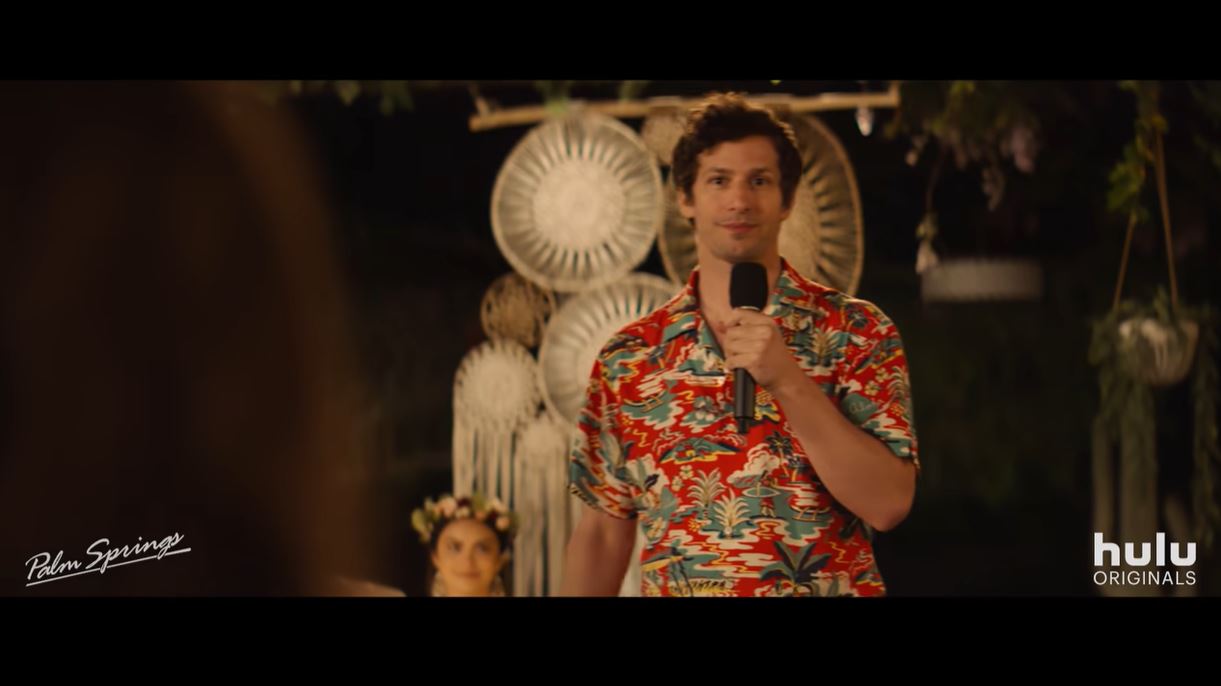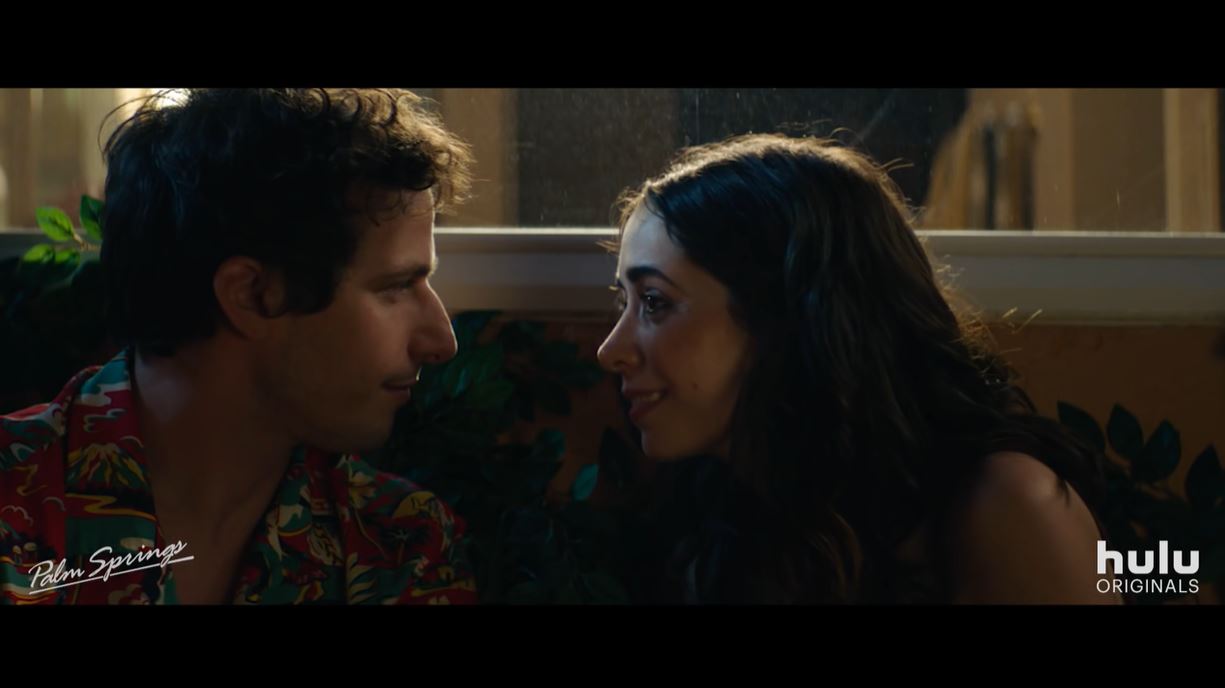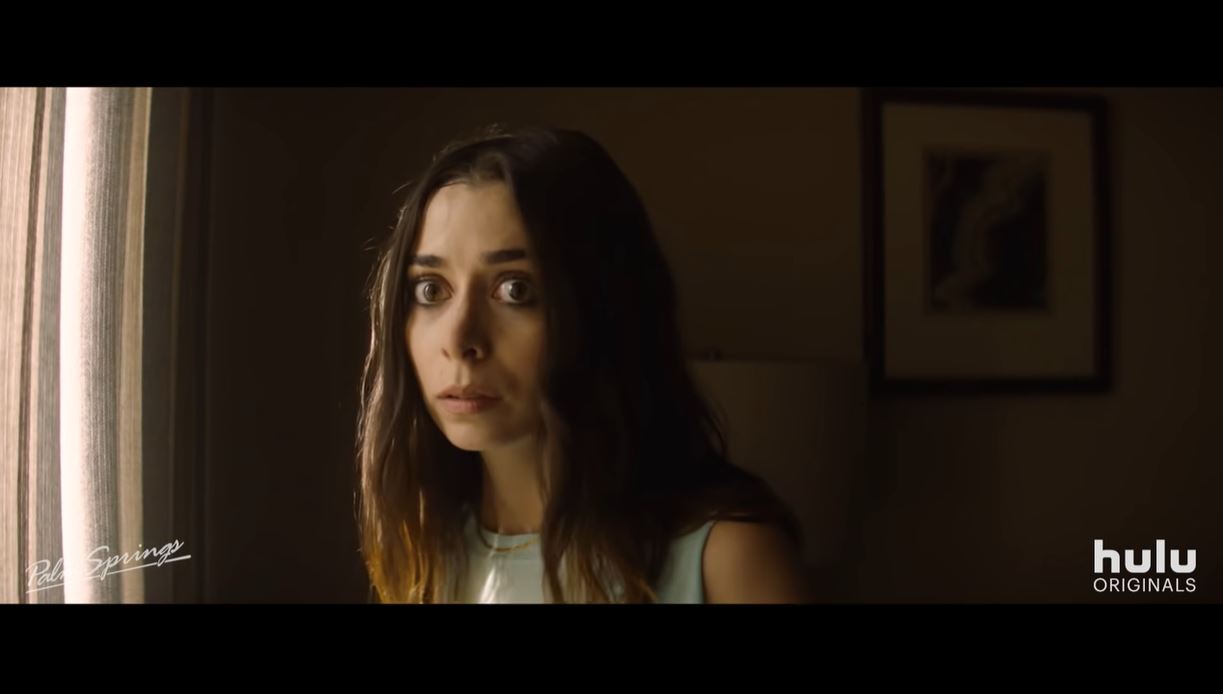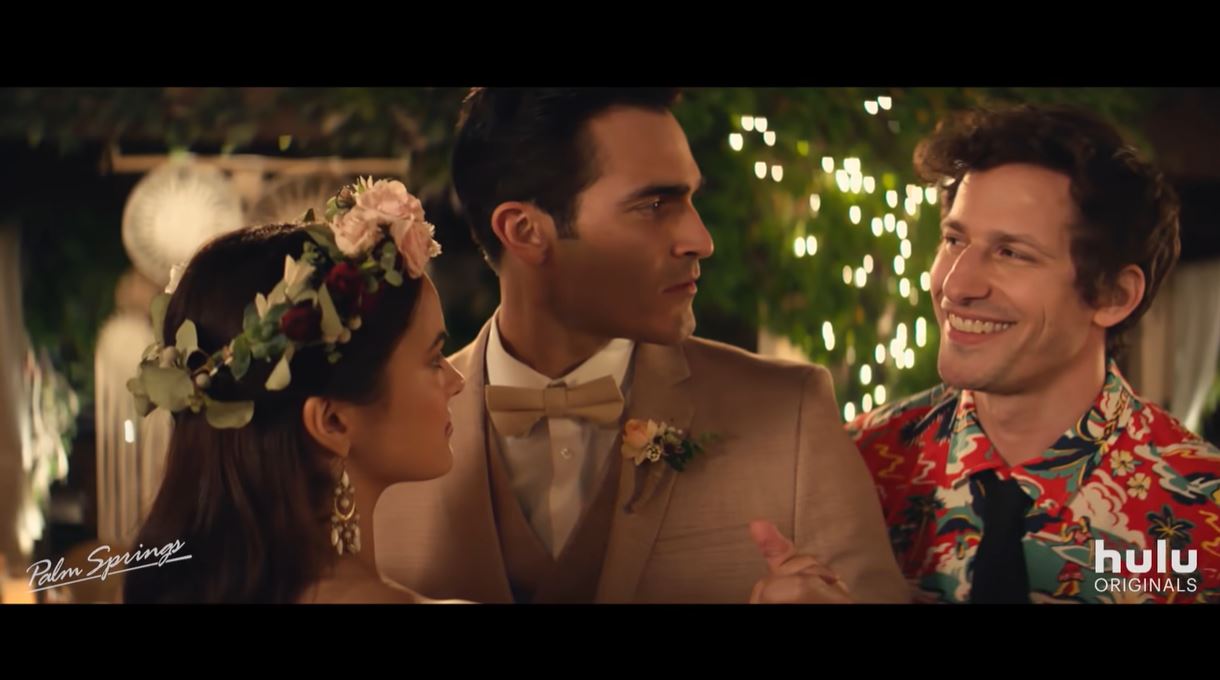Palm Springs is a wacky existential rom-com for our times



SPOILERS
Stanley Kubrick once said, “However vast the darkness, we must supply our own light.” Palm Springs is a film concerned with that supply of light, and how we find meaning when life seems meaningless and every day the same. Directed by Max Barbakow, making his feature film debut, and written by his film school chum Andy Siara (a Lodge 49 writer), Palm Springs would be a good film at any time, but it is especially good right now, when we’re all experiencing a kind of time distortion thanks to self-quarantining, where every day feels the same and like we’re stuck in some kind of time loop. Palm Springs is a time loop movie, rising from a foundation built by Groundhog Day, and it uses that structure to address issues of life, death, meaning, relationships, and acceptance, while also being a genuinely funny movie about a couple that falls in love at a wedding.
The film opens with Sarah (Cristin Milioti, superb as always) waking up the morning of her younger sister’s wedding. Her sister, Tala (Camila Mendes), is marrying super-hunk Abe (Tyler Hoechlin) at a Palm Springs resort, and Sarah does not seem to be enthused for the big day. At the reception, her maid-of-honor speech is hijacked by Nyles (Andy Samberg), who delivers a flawless wedding speech while “dressed for a luau” as one guest points out. In its first minutes, Palm Springs seems like a send-up of bourgeois Millennial weddings, with everything from Nyles’s vapid Insta-ready girlfriend as a bridesmaid (Search Party alum Meredith Hagner), to an officiant in a cowboy hat and Nudie suit (Chris Pang, rocking that suit like nobody’s business). But then, in the middle of hooking up with Sarah in the desert, Nyles is shot with an arrow and Palm Springs becomes something else entirely.
SPOILERS FROM HERE ON OUT
Nyles is trapped in a time loop, destined to relive the wedding day over and over and over. This means repeating a morning of unsatisfactory sex with his younger girlfriend, whom he knows is cheating on him, and sitting through a wedding he has completely memorized. Palm Springs never specifies how long Nyles has been in the time loop, but it’s long enough that he can dance his way across the reception knowing exactly when to duck and dodge, and resign himself to his endless, meaningless fate. The night he is shot, he enters a glowing cave to restart the day, and Sarah follows him in, dragging her into the time loop, too. Palm Springs does not even attempt to explain the mechanics of the time loop, it just trusts the audience to know movies like Groundhog Day and Eternal Sunshine of the Spotless Mind and go with it. Sarah, however, takes some time adjust. Again, not specified how long, but the idea is that Sarah and Nyles spend A LOT of time together.
On its most obvious level, Palm Springs is about relationships, and finding a person you “will get sick of” but still want to be with. On another level, it’s about finding meaning—supplying light—even when life seems meaningless. (On a third level, it can be read as an allegory for death and acceptance, that what matters most is enjoying good moments as they come.) Nyles’s motto is that everything is meaningless and there is no point. He’s trapped in a cycle in which he can’t die, can’t age, can’t change his outcome, so why care about anything? He has embraced a kind of harmless nihilism, sometimes ruining Tala and Abe’s wedding, sometimes giving a great speech, and not really investing in any of it. Why should he? He’s just going to have to do it all over “tomorrow”.
But at the same time, Nyles acknowledges that “pain is real”, and that even though everyone else at the wedding will be unaffected by their hijinks, he and Sarah must live with their own feelings as consequences. Nyles doesn’t seem to realize that this is a contradiction to his own “nothing means anything” philosophy, and that by simply acknowledging feeling, he is acknowledging meaning. Sarah, though, wants out of the time loop. She simply cannot keep reliving this day, because it means waking up the morning after her worst mistake. The time loop offers an escape from the potential consequences of her actions, but she cannot escape the reality of that first waking. She can’t out-reckless or out-care her feelings every morning when she wakes, and so she resolves to find a way out. But Nyles just wants to stay in the loop with Sarah, where everything is good. Leaving the loop means risking their relationship, which is built on this highly unusual shared foundation. What if they leave the loop and lose each other? They’re messing with quantum physics with no guaranteed outcome. Things are good here and now, why move forward?
Palm Springs is really funny, genuinely sweet, and romantic. Maybe this isn’t the grand, centuries-spanning romance of Nicky and Joe in The Old Guard, but Nyles and Sarah are just as solid and real as a couple, grounded as they are in how intimately they know each other, and seeing each other at their worst and still accepting one another as worthy of love. Nyles and Sarah supply light for each other, entertaining themselves through countless mundane days and finding comfort in their companionship. Real life won’t be much different from the time loop—days will change, but they will be dealing with the same issues and complications they had going into the time loop—but they’ll be together. Palm Springs asks a lot of questions about existence and purpose, and the answer to all of them is love, the biggest flashlight in the universe.











